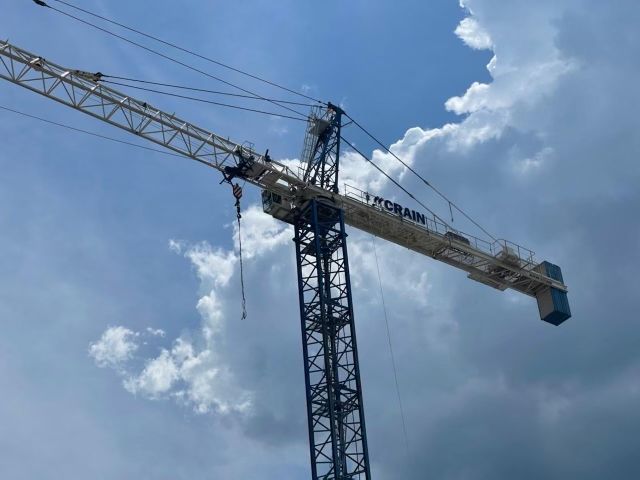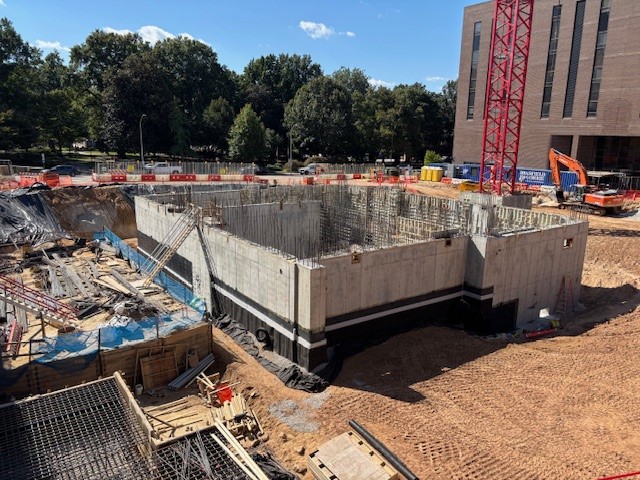Plan a Successful Commercial Building Project

When embarking on a commercial building project, whether it’s a retail space, office building, or mixed-use facility, the planning phase is crucial for success. A well-thought-out plan helps you stay within budget, meet deadlines, and ensure that the end result aligns with the vision and needs of your business. In this blog post, we’ll guide you through the essential steps to plan a successful commercial building project.
1. Define the Purpose and Scope of the Project
The first step in planning a commercial building project is to define the purpose of the building. Whether it’s a new construction or a renovation, identifying the primary function of the space will guide every decision made throughout the project. Are you designing an office building, a retail space, or an industrial facility? Understanding the specific needs and functionality of the space will help you make design, material, and layout decisions that support your business goals.
Once you’ve defined the purpose, you need to determine the scope of the project. This includes the square footage, number of floors, specific features required (such as meeting rooms or break areas), and any unique requirements like special access points, equipment, or technology infrastructure. Be specific and outline every aspect of the building’s needs to avoid misunderstandings and delays later on.
2. Set a Realistic Budget
A key element in any commercial building project is the budget. Setting a realistic budget will not only determine what’s achievable but also set expectations for the entire project. Your budget should cover all construction costs, including design, permits, labor, materials, and potential contingency funds for unexpected expenses.
To create an accurate budget, work with an experienced contractor or project manager who can estimate construction costs based on your scope of work. It’s wise to also set aside a contingency fund of around 10–20% of the total budget to account for unexpected changes or issues that arise during the project.
3. Assemble a Skilled Team
A successful commercial building project requires a team of skilled professionals. It’s essential to choose the right architect, contractor, engineers, and other specialists who can collaborate effectively and bring your vision to life. Start by selecting an architect who has experience designing commercial buildings that align with your project’s purpose. The architect will help you create a design that is not only aesthetically pleasing but also functional and compliant with building codes.
Next, you’ll need a contractor to oversee the actual construction. Choose a contractor with experience in commercial building projects and a strong reputation for delivering on time and within budget. Depending on the complexity of your project, you may also need specialized engineers, such as structural, electrical, or mechanical engineers, to ensure that the building meets safety standards and performs well.
4. Secure Financing
Securing financing is a critical step for most commercial building projects. Whether you’re financing the project through a loan, private investors, or using company funds, you must ensure that the financial aspect of the project is handled properly.
If you’re obtaining a loan, it’s important to work with a lender who specializes in commercial real estate. They will be able to guide you through the loan process and ensure you get the best terms for your project. A solid business plan and a detailed project proposal are often required to secure financing.
Having a clear understanding of the costs and potential return on investment (ROI) will help you present a strong case to potential lenders or investors. The financial plan should also account for operating costs once the building is completed.
5. Obtain Permits and Approvals
Before construction begins, you will need to secure the necessary permits and approvals from local authorities. These may include zoning permits, building permits, environmental permits, and others, depending on the location and type of building. The permitting process can take time, so it’s essential to start early and factor it into your project timeline.
Work closely with your architect and contractor to ensure that the design complies with all local building codes and regulations. This will help avoid costly delays or rework later on in the process. In addition to permits, you may need to go through a public review process or consult with stakeholders, such as local businesses or community groups, depending on the nature of the project.
6. Create a Detailed Timeline
A well-structured timeline is essential for the success of any commercial building project. The timeline should include all major milestones, such as design approval, permitting, construction phases, and final inspection. Your contractor or project manager can help create a timeline that accounts for realistic construction durations and avoids delays.
Keep in mind that unforeseen circumstances, such as weather conditions or supply chain disruptions, can impact the timeline. It’s important to build some flexibility into your schedule and remain proactive in managing any potential issues.
7. Design the Building with Functionality in Mind
Design is one of the most important aspects of any commercial building project. Your building should reflect the needs of your business while also considering factors like employee productivity, customer experience, and overall aesthetics.
Work with your architect to ensure that the design prioritizes functionality. For example, if you’re designing an office building, open floor plans might encourage collaboration, while private offices may be necessary for executive staff. For retail spaces, you may need to think about customer flow and visibility, while industrial buildings must be optimized for equipment and safety.
The design should also take into account future growth. A scalable design ensures that your business can adapt as it expands or changes over time. Future-proofing your building will save money in the long run by avoiding costly renovations or upgrades.
8. Focus on Sustainability
Sustainability has become a major consideration in modern commercial building projects. Not only does designing an energy-efficient building reduce operational costs, but it also aligns with the growing demand for environmentally conscious construction practices.
When planning your project, consider energy-efficient technologies such as LED lighting, smart HVAC systems, and insulation materials. Solar panels, green roofs, and water-saving plumbing systems are also becoming popular in commercial buildings. Additionally, using sustainable materials, such as recycled steel or low-VOC paints, can contribute to a healthier work environment.
Going green may also earn you certifications such as LEED (Leadership in Energy and Environmental Design), which can increase the building’s value and appeal to eco-conscious tenants or customers.
Additionally, industry publications like CCR-Mag.com provide valuable insights and trends for commercial real estate and building projects, offering helpful articles and expert advice on how to incorporate sustainability into your building’s design and operation.

9. Prepare for Potential Challenges
Throughout the course of your commercial building project, you may encounter challenges ranging from unexpected construction issues to budget overruns. Being proactive and prepared for these challenges is key to staying on track.
Work with a project manager or contractor who can help you identify potential risks early and create contingency plans. Establish clear lines of communication between all parties involved in the project so that any issues can be addressed swiftly. Regular progress meetings and site inspections can help ensure that the project stays on schedule and meets your expectations.
10. Ensure a Smooth Handover
Once construction is complete, the final step is the handover of the building. This involves a thorough inspection to ensure that all work has been completed according to the plans and that the building is safe and functional. Any outstanding issues should be resolved before the building is occupied.
Make sure that all warranties, manuals, and maintenance schedules are provided by the contractor. A successful handover is critical for ensuring that the building operates as intended and that your business can move in without delays.
Conclusion
Planning a successful commercial building project is no easy feat, but with the right preparation and guidance, it can be a rewarding experience. By clearly defining your goals, setting a realistic budget, assembling a strong team, and staying organized throughout the project, you can create a space that meets your business needs and supports its future growth. Focus on collaboration, communication, and flexibility, and your commercial building project is sure to succeed.



